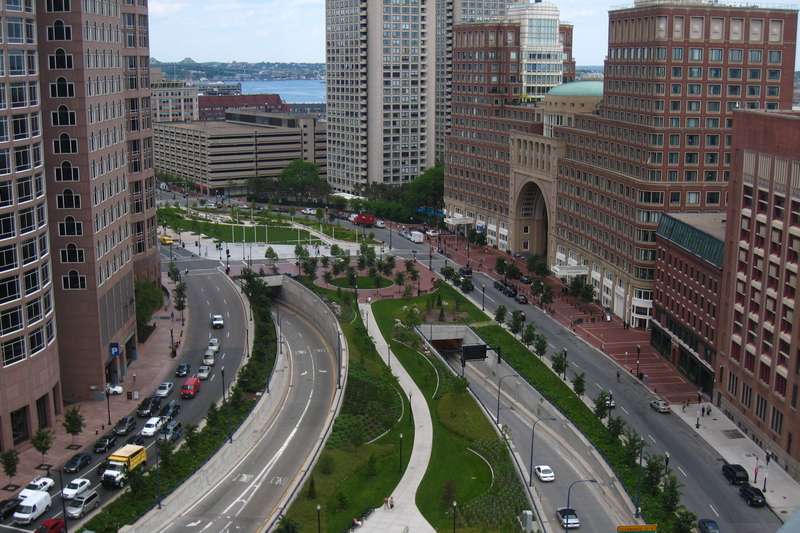Budding arts center will lose its leader
Departure not expected to derail Greenway project
By Geoff Edgers, Globe Staff | June 4, 2008
Daniel Neuman, touted as the leader who would open the doors to the New Center for Arts and Culture, a cultural anchor on the Rose Fitzgerald Kennedy Greenway, is leaving after less than two years on the job.
Though New Center leaders said the decision will not slow momentum on the multimillion-dollar project, some local leaders said they were disappointed to hear of the exit. "Obviously, this is an unwelcome setback," said Peter Meade, chairman of the Greenway Conservancy, who described Neuman as a "delightful individual to work with."
Neuman, 64, said yesterday that he will return to a position as a professor of ethnomusicology at the University of California at Los Angeles. He was executive vice chancellor and provost at UCLA before taking the New Center post.
Neuman said he had taken a two-year leave from the university and would have been forced to retire if he stayed in Boston.
"I saw myself as somebody who would open the center and immediately step down," he said yesterday. "I think the psychological boundary of having to retire from the university was too big a boundary."
He estimated it will take another five years to build the center.
Plans for the center were unveiled with great fanfare in 2004, with organizers comparing the project to New York's 92d Street Y, a venue that would mix lectures and performances. Even without an official home, the center has sponsored cross-cultural events at other spaces in the city. The project has been tagged with a budget between $60 million and $80 million.
Boston developer Ronald Druker, a member of the New Center board, said Neuman's exit won't slow plans for the building, a jagged four-story structure on a prime Greenway parcel designed by renowned architect Daniel Libeskind. He also dismissed suggestions that the center should consider merging with the Boston Museum, another proposed project on the Greenway that has been years in the planning, without a firm opening date on the horizon.
"One has nothing to do with the other," said Druker. "Each has its own mission, and the idea of having to work in partnership with another institution is very daunting and complicated."
Neuman's departure won't be the only change. Druker himself said yesterday he is stepping down as board chairman to be replaced by Paula L. Sidman, whose late husband, Edwin, was the center's founding chairman. Druker said he will stay involved.
In praising Neuman, Druker said he helped organize the center's fund-raising strategy and recent programming - which included a dance performance on the theme of Armenian genocide and a celebration of James Joyce's novel "Ulysses" - and developed relationships with other city cultural leaders. He also said the organization knew Neuman might want to return to UCLA when it hired him.
The center will soon hire a search firm to find a new leader. Druker declined to set a deadline for finding a replacement. For now, deputy director Francine Achbar will serve as acting executive director.
"Will it require attention? Of course," Druker said. "But that's not a setback."
Yet city Councilor Sam Yoon said yesterday he was concerned about the change.
"There is clearly a lack of activity on the Greenway, this kind of emptiness," he said. "It will take a lot of money to build [the center] and ultimately it takes leadership to generate the resources so that we can capitalize. This does not bode well."
Former state Senator George Bachrach, executive director of the Environmental League of Massachusetts, said he's not surprised it has been challenging to build on the Greenway.
"Almost every one of these projects, in order to get support and approved, painted as rosy a picture as they could," he said. "So I think the initial plans were always seen to be ambitious and the actual fulfillment of them was problematic. From there, you went smack dab into a terrible economic climate."
Local leaders said they did believe that the New Center will become reality, largely because of the strength of its board, including Druker and Robert Beal, president of a major commercial real estate company.
"It looks like a pretty robust organization, and I'm sure they'll get over this sort of little hiccup," said Hubert Murray, a past president of the Boston Society of Architects, who has been involved in Greenway planning.
Meade said that he believes the New Center is more likely to be built than the Boston Museum, a $120 million project being planned to focus on the city's history.
"What makes the New Center possibly a different category is you've got Ron Druker and Bob Beal involved, very smart folks who have raised money and built buildings," said Meade.
"If they say they'll get this done, I suspect they'll get this done."
Frank Keefe, chief executive of the Boston Museum, said yesterday that the project is on track. In recent months, it has cut its overall cost from $190 million to $120 million and has about $7 million pledged.
Unlike Druker, he said he would welcome discussions about a potential merger of the two projects.
"I'm open to all ideas," Keefe said. "I'm trying to make something feasible, and in Boston starting a new organization is not easy."















